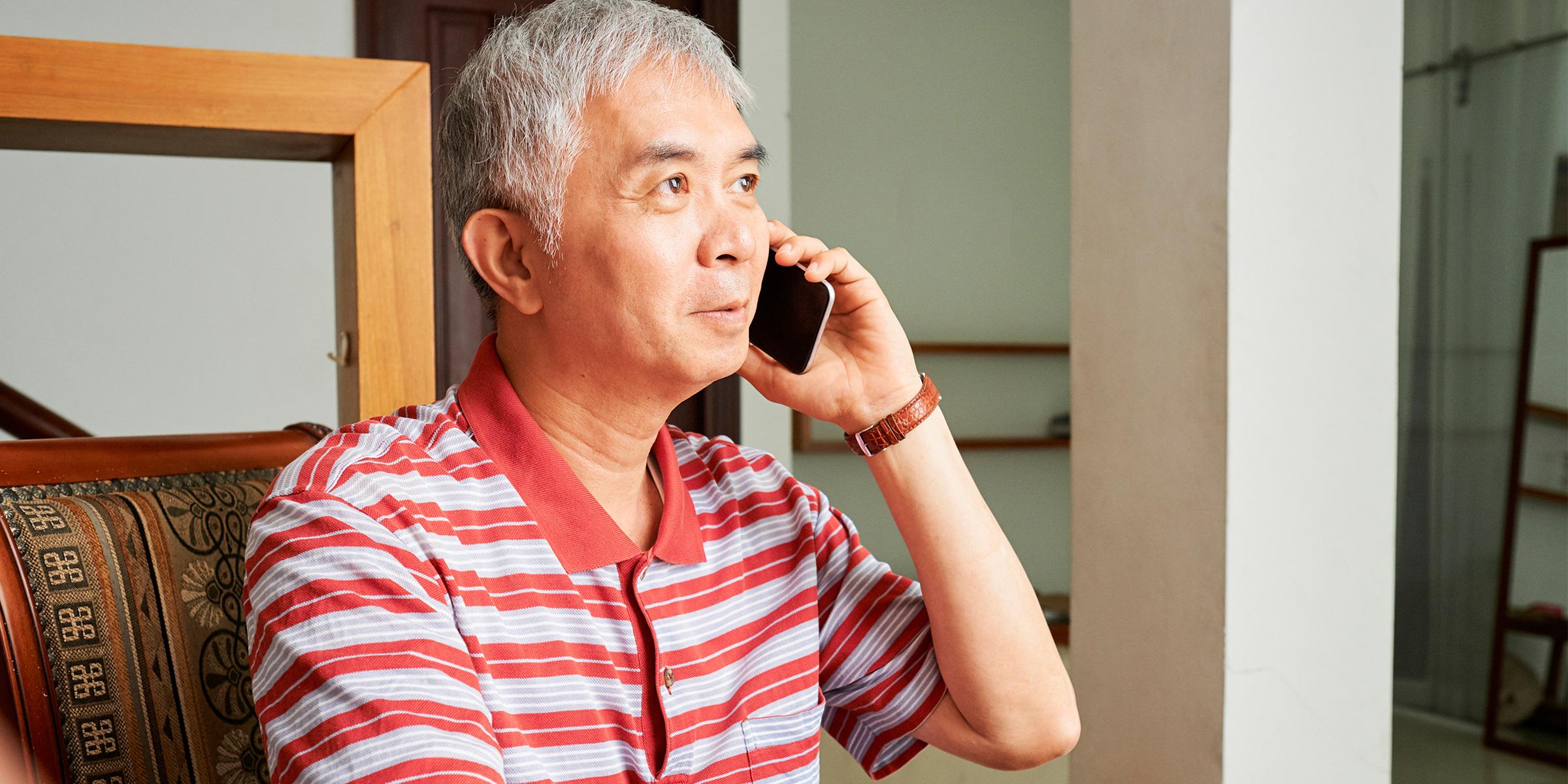
Ideas to help a person with dementia feel in touch
We share ways to help keep in touch with and feel connected to friends and relatives.
Feeling connected to family and friends can present challenges as someone’s dementia progresses, but there are approaches that could help.
Supporting communication
If the person’s finding the telephone difficult, consider a phone that’s designed to be easier to use.
Some have larger keys or speed-dial buttons with pictures of each person they’ll call. Others flash a light while ringing or amplify the caller’s voice.
Video calls on Zoom, WhatsApp, Skype and similar apps are more accessible now. Seeing the other person can make it feel more like you’re in the same room.
Apps like Signal, WhatsApp and Telegram mean you can share one-to-one or group messages, along with photos and clips of video or sound.
Letters can feel more personal and relaxed, without the pressure to respond immediately. They could also help the person retain their writing skills.
Postcards offer the additional pleasure of looking at the picture on their front.
Keeping connections
Between calls and messages, looking at photos can be a way to feel connected with friends and relatives. This could be pictures in an album or displayed around the home.
A digital photo frame can be set to scroll through favourite images, perhaps with sound or video clips.
You could view photos and videos on devices like tablets or smartphones, or search for media about special times the person has shared with others. This can be anything from a virtual walking tour of somewhere significant to old TV clips.
Mementoes, scents and memory boxes, with meaningful objects in them, can be another way to connect with events involving important people.
Other activities, like drawing someone or preparing a meal, may offer a similar benefit.
What you said
Carole Speirs in East Sussex said,
‘Because I don’t live near my mum’s care home, telephoning is my main way to communicate with her. I try and phone at the same time each day to establish continuity and a sense of routine.
‘She has a large window in her room which she loves to look out. I ask her what the weather is like outside the window.’
On Talking Point, Andbreathe said,
‘I take my iPad to Mum’s and call up one of her old friends who lives some distance away.’
LynneMcV added,
‘My late husband’s auntie always used to write letters to update him on family news and what was happening back home in Scotland. She would also regularly post him a copy of the local paper and, if she went on any trips, she would send him a postcard from wherever she was, even if it was just a day trip.
‘This really helped my husband feel connected to his family and he could reread the letters, postcards and snippets from the newspapers (which quite often featured friends and family) whenever he wanted.’


Sally
says